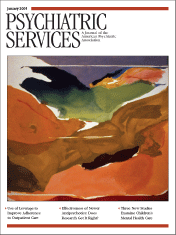Psychological Distress of Nurses in Taiwan Who Worked During the Outbreak of SARS
Abstract
OBJECTIVES: This study explored whether nurses who were working during the severe acute respiratory syndrome (SARS) crisis showed symptoms of distress. This study also examined whether nurses experienced stress from being conscripted to work in higher-risk units. METHODS: This study was conducted in Taiwan during the peak of the SARS outbreak in 2003. Participants were recruited from nursing staff in a community hospital. Participants were divided into three groups: those who originally worked in units with a high risk of SARS exposure (N=65), those who had been involuntarily conscripted into such units because of manpower demands (N=21), and those who worked in units with a low risk of SARS exposure (N=45). Participants were evaluated with two questionnaires: the Impact of Event Scale and the 90-item Symptom Checklist-Revised. RESULTS: The results showed that 11 percent of the nurses surveyed had stress reaction syndrome. The symptoms of psychological stress reactions included anxiety, depression, hostility, and somatization. The highest rate of stress reaction syndrome was observed in the group that originally worked in a high-risk unit, and the conscripted group experienced the most severe distress on average. CONCLUSIONS: These findings suggest that the psychological distress of nurses who worked during the SARS outbreak was moderate. The distress was more prominent among the two groups of nurses who were working with patients with SARS.



